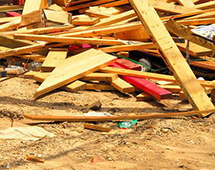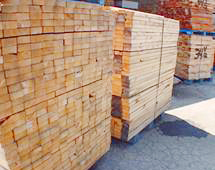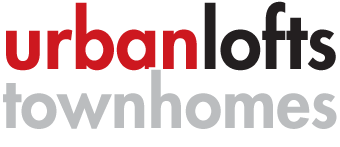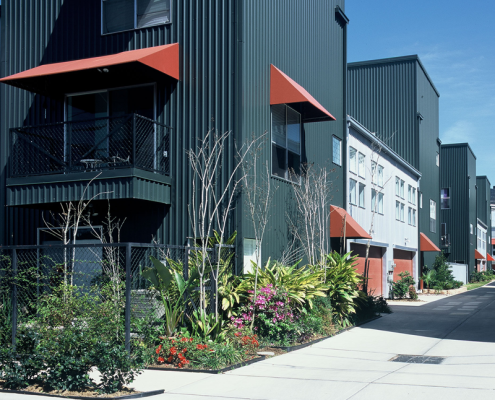What is Green Building?
We are all familiar with the term “green building,” but we all have different understandings of what the term actually means. To some of us, we might feel that it means the outside of the building, to some it might mean the types of flooring, and to others it might mean every component in the building. There are hundreds of organizations that provide a certification process for green building with various guidelines that need to be followed in order to qualify in their programs. Green building is a mixture of these ideas, however, and is defined by Wikipedia as “an outcome of a design which focuses on increasing the efficiency of resource use—energy, water, and materials—while reducing building impacts on human health and the environment during the buildings lifecycle, through better siting, design, construction, operation, maintenance, and removal.”
They don’t only look green, They are green!
Urban Lofts’ Green Initiatives
Codes and Regulations
The building departments that approve our plans and inspect our townhomes across the nation are constantly adopting more stringent building codes to promote sustainable living and green building initiatives. Our organization makes every effort to take the proposed changes and incorporate the changes into our designs as soon as they become available. We also hire energy consultants at the beginning of the design process to review our window selections, HVAC system, insulation, duct sizing, and much more to assist in designing our homes more energy efficient.
Site and Water
- Retain as many native trees onsite as possible
- Implement tree mitigation plan to replace caliper inches of trees that had to be removed for development
- We only build on infill sites which allows us to take advantage of existing infrastructure
- Meet and exceed the Storm Water Pollution Prevention Plan requirements
- Engineer our plans to have a balanced cut and fill site to the extent the site allows
- Installation of artificial turf in cities with little rainfall
- Built in locations near transit stops and other community facilities
- Use of washout pits for concrete trucks, paint, and other chemicals that would be hazardous to the soil
Energy Efficiency
- Low E double-pane windows
- Programmable thermostats
- Zoned damper system only heats and cools the floor you’re on,
- R-30 insulation in roof cavities
- Duct work and air handler sealed with mastic
- Insulated garage walls and garage doors
- Bath and kitchen plumbing fixtures use less gallons per minute than code requires.
- Galvalume metal panels reflect the suns rays providing energy savings of up to 8 percent.
- Ceiling fan prewires in bedrooms and living room lower the temperature in the rooms and allows your HVAC unit to run less.
- Natural light due to number of windows and skylight allows the homeowner to not have to turn the lights on at any point in the day.
- Exterior lights on photo cells to eliminate waste during the day
- Attic ventilation that exceeds building code requirements
Health and Indoor-air Quality
- Non-toxic cleaners used throughout the construction process—toxic cleaners used only when needed
- Ventilate homes after paint and sealers are applied
- Limit the use of carpet to less than 25 percent of the home where traffic is minimized in the third-floor bedroom
- We provide stained concrete and wood floors on the first and second floors which is easier to maintain and does not retain the dirt like carpet does.
- We use water-based paints, which release less toxins than oil-based paints.
- Application of low-VOC paints in all of our homes
- Operable windows placed throughout house to provide cross ventilation
- We do not use any unvented heaters during the construction of the lofts.
- We install formaldehyde-free insulation.
Materials Efficiency
- Practicing waste prevention plans
- Recycle small lumber waste into blocking for future projects
- Not only are the building materials on the exterior of the building energy efficient, but they also provide for less maintenance in the future. The Galvalume metal panels come with a 20-year warranty protecting against rusting, chipping, and fading thereby increasing the lifespan of the materials and reducing the amount of materials that will be needed to maintain the building in the future.
- We use locally made products when available.
- The exterior sheet metal is 100 percent recyclable, which allows the exteriors to meet the standards of green deconstruction.
- The metal is made from recycled materials.
- Sheet metal is durable and provides a low-maintenance exterior.
Actions You Can Take for a Healthier Home
- Regularly maintain your heating and ventilation system.
- Replace your filters every 30 to 60 days.
- Wipe your feet on entry doormats before entering your home.
- Keep pets out of your bedroom.
- Do not allow people to smoke inside your home.
- Clean your house with low-toxicity or nontoxic products.
- Do not use harmful pesticides in your yard.
Resource-conscious Decisions
- Use energy-saving compact LED light bulbs.
- Set your air conditioner a few degrees higher in the summer and your heater a few degrees cooler in the winter when you leave home.
- Replace HVAC filters on a regular basis so your system does not work so hard and use extra energy.
- Leave your fans running during the hotter months, which will make your home feel a few degrees cooler.
- Set your irrigation system with the season so you do not waste water in cooler months.
- Have window coverings installed to block out the sun in the summer months.
- Recycle household products such as aluminum cans, plastic bottles, and newspapers.
- Purchase eco-friendly products.
- Use drought-friendly plants and vegetation.
- Program the programmable thermostats to fit your lifestyle so you do not waste energy while you are not home.
- Use power strips in your office for all electronic products so that once the power strip is turned off none of the adapters will continue to use electricity.
- Walk or ride your bicycle versus driving your car.
Waste Prevention Plan and Recycling Program
- Have you ever seen this…

- …turn into this?


